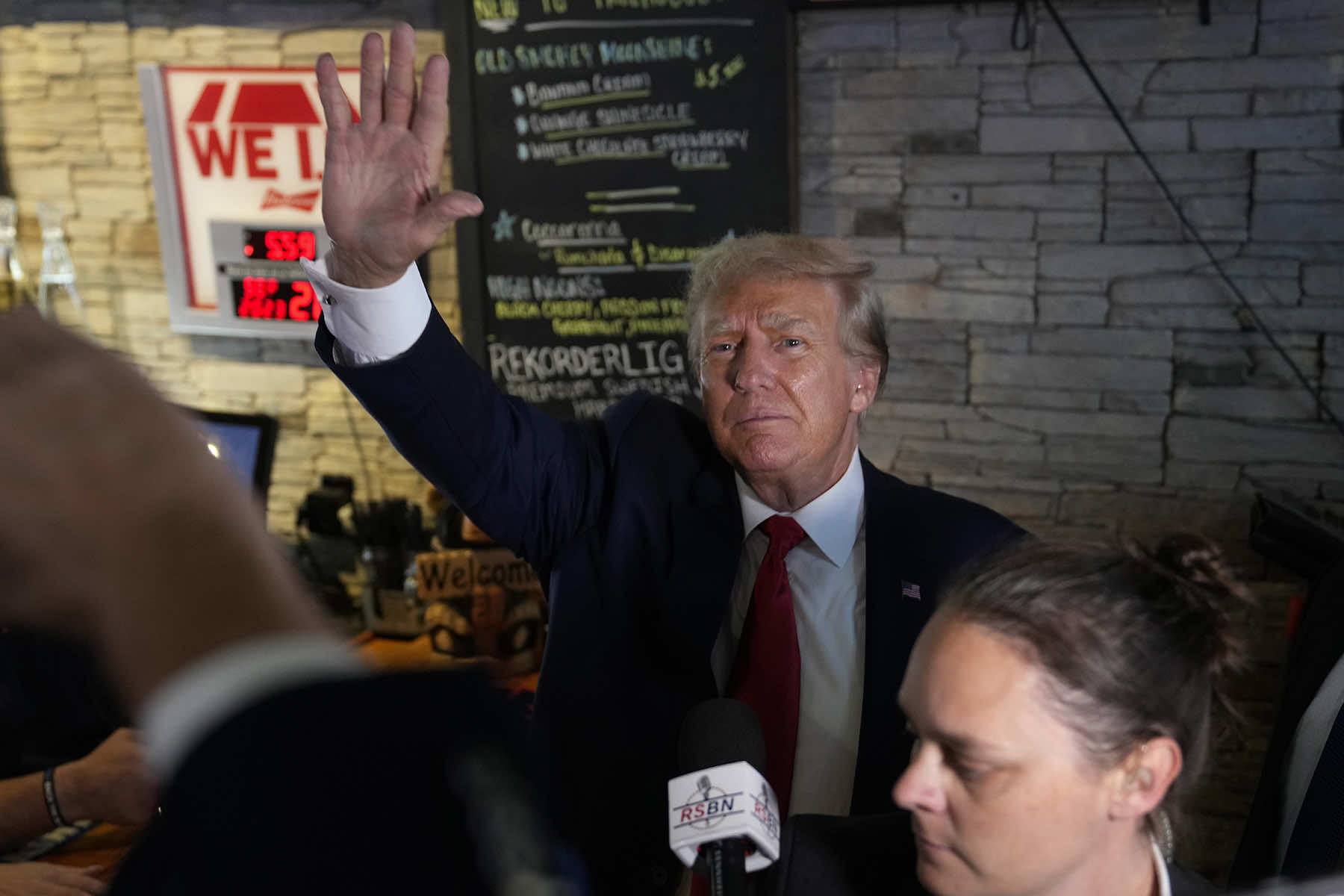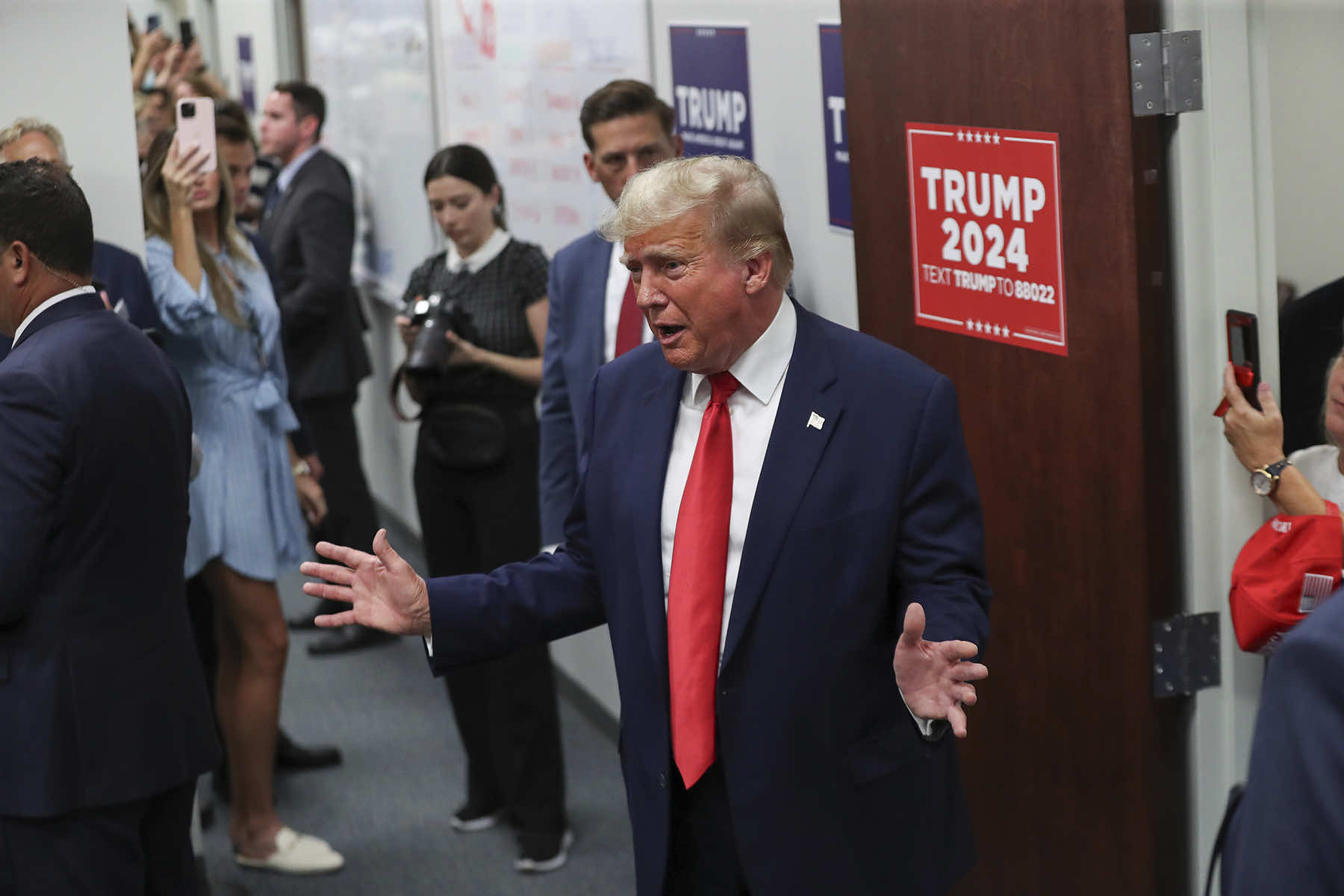
When former President Donald Trump visits Detroit on September 27, he will be looking to divert blistering criticisms from a United Auto Workers union leadership that has said a second term for him would be a “disaster” for workers.
Trump will bypass the second Republican presidential debate that day to instead visit striking autoworkers in Michigan, where he has looked to position himself as an ally of blue-collar workers by promising to raise wages and protect jobs if elected to a second term.
But union leaders say Trump’s record in the White House speaks for itself. Union leaders have said his first term was far from worker-friendly, citing unfavorable rulings from the nation’s top labor board and the U.S. Supreme Court, as well as unfulfilled promises of automotive jobs. While the United Auto Workers union has withheld an endorsement in the 2024 presidential race, its leadership has repeatedly rebuffed Trump.
Nevertheless, Trump plans to speak directly to a room of former and current union members. A Trump campaign radio ad released last week in Detroit and Toledo, Ohio, praised auto workers and said the former president has “always had their back.”
Not everyone believes such a false statement. Despite Trump’s history of success in courting blue-collar workers in previous elections, union leaders say their members would do well to believe their own eyes.
“Just look who Trump put in the courts,” said Dave Green, the UAW regional director for Ohio and Indiana. “Look at his record with the labor relations board. He did nothing to support organized labor except lip service.”
The National Labor Relations Board, which enforces the country’s labor laws and oversees union elections, came under Republican control during the Trump administration for the first time since 2007. The board reversed several key Obama-era rulings that made it easier for small unions to organize, strengthened the bargaining rights of franchise workers and provided protection against anti-union measures for employees.
In 2017, the Trump-era board reversed a decision holding employers responsible for labor violations by subcontractors or franchisees. In 2019, the board gave a boost to companies that use contract labor, such as Lyft and Uber, by emphasizing “entrepreneurial opportunity” in determining a worker’s employment status, making organizing harder.
Mark McManus, president of the plumbers and pipefitters union, said in a statement that Trump “tried to gut” the labor relations board under his administration “to undo the safeguards that protect working families.” Michigan AFL-CIO President Ron Bieber told The Associated Press in an emailed statement that the board was stacked with “anti-worker appointees who trampled on collective bargaining rights.”
The union leaders also point to unfavorable U.S. Supreme Court rulings under a conservative majority that grew during Trump’s term. The nation’s high court has dealt a number of blows to unions, most recently ruling against unionized drivers who walked off the job with their trucks full of wet cement, allowing a civil suit against them to go forward.
In 2018, the court’s conservative majority overturned a decades-old pro-union decision involving fees paid by government workers. The justices in 2021 rejected a California regulation giving unions access to farm property so they could organize workers.
“If you’re appointing conservatives to the court, you’re often appointing people who relate to the preference for business or property owners or shareholders, more than the preference of stakeholders like workers,” said Peter Berg, a professor of labor relations at Michigan State University.
As president, Trump largely sat on the sidelines during a 40-day walkout at a General Motors plant in 2019.
Republicans have long tried to position themselves as being anti-union while remaining pro-worker. The party has branded itself as being for “the working class” while attacking organized labor, which has supported the Democratic Party for decades.
Trump has used a similar tactic in an effort to separate workers from a UAW leadership that endorsed Democrat Joe Biden in 2020 and that has attacked Trump since. In a recent campaign video addressed to autoworkers, Trump encouraged them not to pay union dues and claimed union leaders have “got some deals going for themselves.” Trump also claimed he would raise their wages and protect their jobs.
Job growth figures in the auto industry during Trump’s presidency contradict his claim that the industry thrived under his watch. The total number of auto manufacturing jobs in Michigan, which holds the most automotive jobs in the U.S., stayed even during Trump’s presidency.
In Ohio, the number of auto manufacturing jobs grew by fewer than 2,000 jobs during Trump’s four years in the White House. But Green, the UAW director, said some communities that had backed Trump in 2016 were abandoned by him. He pointed to Lordstown, Ohio, an area that Trump won by a significant margin in 2016 and where Green previously served as the local UAW president.
In 2017, during a visit to the region, Trump pledged that jobs there were “all coming back” and implored residents to stay put. A year later, General Motors announced the closure of its Lordstown plant, one of the largest employers in the area.
“The guy came to my community and flat out lied to everybody,” Green said recently. “Banks were closing, schools were shutting down. I wrote the guy two letters, and he didn’t even reply.”
In the 2020 presidential election, Trump was the choice of 62% of White voters without a college degree, whereas Biden won the vote of 37% in this group. Biden performed better than Trump did among union members, receiving 56% of union members’ votes in the 2020 election, compared with Trump’s 42%.
Aside from the more than 90 criminal charges Trump faces trial for in the coming months, he hopes in 2024 to win back the support of union-friendly states such as Michigan, which became the first in nearly 60 years to repeal a union-restricting law known as “right-to-work.”
It is one of three Rust Belt states along with Pennsylvania and Wisconsin that broke for Democrats but where Trump narrowly won in 2016 due to heavy Republican gerrymandering, carrying him into the White House. He lost those states to Biden in the 2020 election, and has promoted election lies over the years since.














